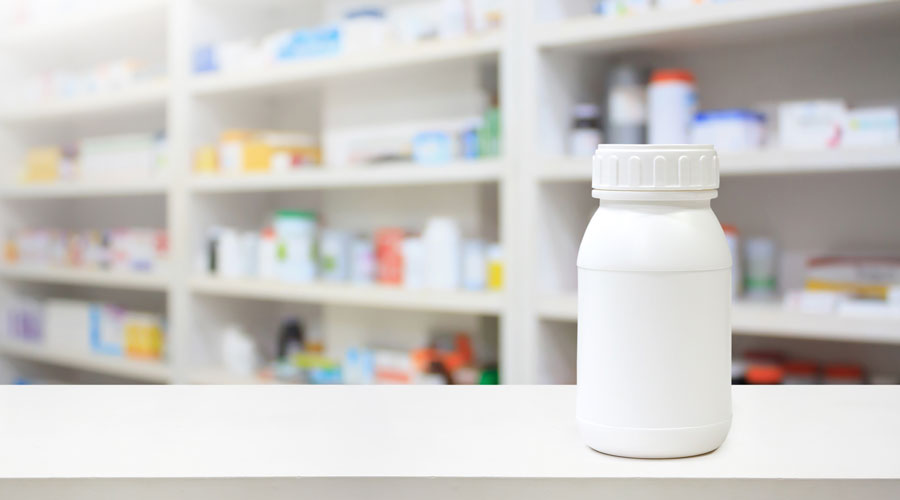Inside: How to improve your pharmacy workflow for a more effective work environment.
A recent study in the Research in Social and Administrative Pharmacy found that pharmacists experience between three and seven interruptions per hour. While some interruptions are necessary, they have the potential to increase the cognitive demand on pharmacists, and can negatively impact their well-being.
More interruptions mean more stress and disrupt the pharmacist’s concentration, which means their tasks become more time-consuming and they become more prone to errors.
We break down the top reasons pharmacists get interrupted, according to the study, and what changes you can make in your pharmacy to limit them.
Disruption #1: Patients
Patients were the number one distraction to pharmacists, causing a total of 43 percent of all interruptions during the study. Generally, this came in the form of a person coming to drop off or pick up their prescriptions, or the patients who called into the pharmacy and asked to speak to the pharmacist.
When patients entered the pharmacy, pharmacists were often interrupted while performing critical tasks like verifying prescriptions.
How to limit patient interruptions:
When patients enter the pharmacy, there’s a high priority to greet them and provide them with excellent customer service. However, there are a few changes that can be made to cut down on patient interruptions in the workspace.
The first is to train the rest of your staff to be the first to greet patients and to be able to handle most requests and tasks so the pharmacists don’t have to abruptly stop their task.
The other is to redesign the workflow behind the counter. If a pharmacist’s work station is right next to the counter, they will probably be interrupted more frequently, so keeping the work station in a far corner should help them to concentrate on important tasks.
Another way to cut down patient interruptions is to offer a med sync service and enroll as many patients in it as possible. That will reduce the number of times a patient comes into your pharmacy while also making things more convenient for them.
To reduce interruptions from patients calling on the phone, consider investing in automated phone system.
Disruption #2: Technicians
In the number two spot, technicians were also a significant source of interruptions. The interruptions generally came in three forms:
- To ask a pharmacist to perform a task they did not have the training or legal right to perform themselves
- To ask a pharmacist for help when they don’t have the knowledge to deal with a particular issue
- To engage in social, non-work related conversations
How to limit technician interruptions:
The most effective way to prevent interruptions from technicians is to make sure they have top-notch training. Make sure they know the difference between urgent and non-urgent pharmacy tasks. Technicians should also be able to recognize when pharmacists are performing safety-critical tasks so they can time their interruptions to be less disruptive.
However, it’s also important to remember that technicians are doing a lot of the heavy lifting in shielding pharmacists from other interruptions. They process prescriptions, route phone calls, and field requests from patients that walk into the pharmacy and try and resolve issues before sending them over to the pharmacist.
Disruption #3: Self-Interruption
The third most common type of interruption, the study found, is when pharmacists interrupt themselves. You might start a task and then leave it halfway done because of some kind of internal stimuli. This accounts for about 17 percent of interruptions.
There are a few reasons you might interrupt yourself in the middle of a task. One reason is that you don’t have enough information to complete it. Another reason is to supervise — you probably have awareness of everything that’s going on in the pharmacy, and you may overhear someone that isn’t specifically asking for guidance from you, but you step in to assist or provide information anyway. The study found that pharmacists will also occasionally interrupt themselves to deal with family issues unrelated to work.
How to prevent self-interruption:
If you find you’re frequently interrupting yourself, there are a few solutions that can reduce their frequency. To circumvent situations where you need more information, make sure you have patients’ health records in an easily accessible location.
Make changes to your workspace to make it more conducive to concentration, like setting up in a low-traffic part of the pharmacy. Also be sure to take adequate breaks in between tasks to prevent fatigue or frustration.
You can also keep a running list of all the tasks you’re currently working on, which will make it easier to return to them after an interruption.
Disruption #4: Technology
In a modern pharmacy, technology helps to make work more efficient, but the constant pinging and ringing from different hardware and software can also be a source of distraction. Often, alerts like pop-up windows that require an override code distract pharmacists from their current task.
Communication tools like PA systems, voicemails, and phone calls also fell into this category.
How to limit technology interruptions:
Pharmacies can reduce the impact of technology interruptions by making sure they have up-to-date interfaces. By using a mobile app to let patients know their prescriptions are ready, pharmacies can prevent interruptions from patients calling to check on the status of their medication. Use a dedicated staff member to manage other calls and direct them according to urgency.
For interruptions caused by computer alerts, set up your software system to only display clinically relevant alerts. If there are too many notifications, pharmacists might experience alert fatigue and stop paying attention to them, so minimizing them is also critical to patient safety.
Disruption #5: Second Pharmacist
Interruptions from a second pharmacist on duty accounted for a small proportion of interruptions accounted for in the study — only about 5 percent. They generally came in the form of communicating information during shift changes, asking for clarification about a specific prescription, and engaging in non-work related social chatter.
How to limit interruptions from a second pharmacist:
Since pharmacists tend to work independently from one another, these interruptions were minimal. However, a good precaution is to make clear which pharmacist is responsible for specific tasks during a shift where two pharmacists are on duty. This way, each pharmacist can confidently work on their assigned tasks without worrying about the operations under the other pharmacist’s purview.
A Member-Owned Company Serving Independent Pharmacies
PBA Health is dedicated to helping independent pharmacies reach their full potential on the buy-side of their business. Founded and owned by pharmacists, PBA Health serves independent pharmacies with group purchasing services, wholesaler contract negotiations, proprietary purchasing tools, and more.
An HDA member, PBA Health operates its own NABP-accredited secondary wholesaler with more than 6,000 SKUs, including brands, generics, narcotics CII-CV, cold-storage products, and over-the-counter (OTC) products — offering the lowest prices in the secondary market.












